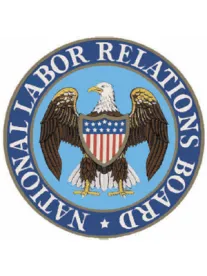A significant change to the manner in which representation elections have been conducted during the COVID-19 pandemic is the increased frequency of mail-ballot elections – whereas, previously, such elections were extremely rare. As circumstances regarding the pandemic have improved, there has been a greater shift to returning to in-person vote casting.
The decision to conduct a mail-ballot election is up to the Regional Director in the jurisdiction where the election petition was filed, subject to review by the National Labor Relations Board (“NLRB” or “Board”) for abuse of discretion. In Aspirus Keweenaw, 370 NLRB No. 45 (2020), the NLRB established six factors for the Regional Director to consider in deciding whether to order a mail-ballot election – the presence of any one factor would justify, though not require, the direction of a mail-ballot election.
On September 29, 2022, a 3-2 majority of the Board, in Starbucks Corporation, Case 19–RC–295849, modified one of the six factors (factor 2) to now provide that when the relevant county is determined by the Center for Disease Control and Prevention (“CDC”) to have a COVID-19 Community Level of “High,” then Regional Director could order a mail-ballot election. The Board’s holding will be applied prospectively (not retroactively, as is typically the case) and will not impact any Decisions and Directions of Elections that have been issued prior to September 29, 2022. Members Kaplan and Ring dissented from the majority opinion.
The Six Factors in Aspirus Keweenaw
In Aspirus Keweenaw, the Board provided Regional Directors six factors for the Regional Director to consider when deciding whether to order a mail-ballot election, or to direct an in-person manual election. If one of the six factors is present, then the Regional Director may order a mail-ballot election, but is not required to do so.
The six Aspirus factors are as follows:
-
The Agency office tasked with conducting the election is operating under “mandatory telework” status.
-
Either the 14-day trend in the number of new confirmed cases of COVID-19 in the county where the facility is located is increasing, or the 14-day testing positivity rate in the county where the facility is located is 5 percent or higher.
-
The proposed manual election site cannot be established in a way that avoids violating mandatory state or local health orders relating to maximum gathering size.
-
The employer fails or refuses to commit to abide by GC Memo 20-10, which contains recommended manual election protocols.
-
There is a current COVID-19 outbreak at the facility or the employer refuses to disclose and certify its current status.
-
Other similarly compelling circumstances.
Starbucks Holding Modifies Factor 2 to Align with CDC Community Levels
In Starbucks, the Regional Director ordered a mail-ballot election based exclusively on the second Aspirus factor, noting that the positivity rate in the county where the election was to take place was above 5 percent during the relevant 14-day period.
The Employer asserted that the Regional Director abused his discretion by directing the mail-ballot election and argued that the six factors enunciated by the Board in Aspirus are outdated and should be revisited. The employer specifically argued that the five percent positivity rate requirement does not accurately capture the community risk of contracting COVID-19.
The Board rejected the Employer’s assertion that the Regional Director abused his discretion and also declined to revisit all six Aspirus factors. However, the Board acknowledged that changes in the current landscape of the COVID-19 pandemic warranted modifying factor 2, by changing its criteria from the 14-day new confirmed cases and positivity rate metric to “whenever the relevant [CDC] Community Level is ‘high.’”
The CDC tracks COVID-19 Community Levels by County and provides Community Level information on its website. The CDC COVID-19 Community Levels measure the impact of COVID-19 in terms of hospitalizations and healthcare system strain, while also accounting for community transmission.
The Board explained the shift to Community Levels, noting:
Unlike the stand-alone data points that currently underlie Aspirus factor 2, the Community Level measure is grounded in a collective assessment of three data points: new COVID-19 cases; new COVID-19 hospital admissions; and the percent of staffed inpatient beds in use by COVID-19 patients.
The Board also emphasized that data regarding Community Levels is calculated on a weekly basis as opposed to the previous 14-day basis, and “Community Levels” are developed through an aggregation of various data sources, whereas positivity rate was based solely on the reporting of localities.
The Board clarified that a Community Level of “Medium” or “Low” will not independently support a mail-ballot determination under factor 2. The Board further stated that a Regional Director who directs a mail-ballot election based on Community Level should cite directly to the relevant Community Level shown on the CDC’s COVID-19 data tracking page or COVID-19 by County page as of the date the Decision and Direction of Election issues.
The Board also rejected a return to its pre-pandemic mail-ballot standards, instead noting that it hoped the Aspirus factors would gradually be less applicable as COVID-19 conditions continued to improve.
The Board acknowledged the dissent’s argument that the CDC’s guidance does not prohibit manual elections from occurring when there exists a “High” Community Level. The Board instead asserted that while the CDC’s community levels are a helpful reference point, the Board ultimately determines the guidelines for how an election should be facilitated.
The Board addressed brief criticisms levied by the Employer against the remaining factors, noting that while factor 1 regarding mandatory telework may not currently be relevant, there exists the possibility that in the future, conditions may necessitate mandatory telework. The Board justified factor 3 on similar grounds, noting that localities may change gathering restrictions in the future. Finally, the Board firmly held that Regional Directors should be able to direct mail-ballot elections when an outbreak occurs at a facility. The Board also dismissed concerns from dissenting Board members that mail-ballot voting has recently had a surge in “voting irregularities.
Dissent Believes the Board Did Not Adjust the Aspirus Factors Enough
The dissenting members Ring and Kaplan agreed with the Board’s decision to revisit the Aspirus factors, but felt the Board’s decision did not go far enough. The dissent criticized the majority’s failure to consult expert guidance before modifying the Aspirus factors, noting that the Board does not have expertise in public health. The dissent emphasized that COVID-19 conditions have improved significantly since the Apsirus factors were promulgated.
The dissent also noted that the CDC’s own guidance does not recommend that individuals avoid workplaces or public spaces when there is a “High” Community Level, which cast doubt on whether that should be the appropriate standard for directing a mail-ballot election.
Finally, the dissent concluded that the majority failed to consider a surge in mail-ballot voting irregularities (see here) and urged a reexamination of the Aspirus factors and what safeguards can be implemented to make in-person elections appropriately safe.
We will continue to keep you posted as the NLRB continues its examination of these factors governing representation elections.



 />i
/>i

